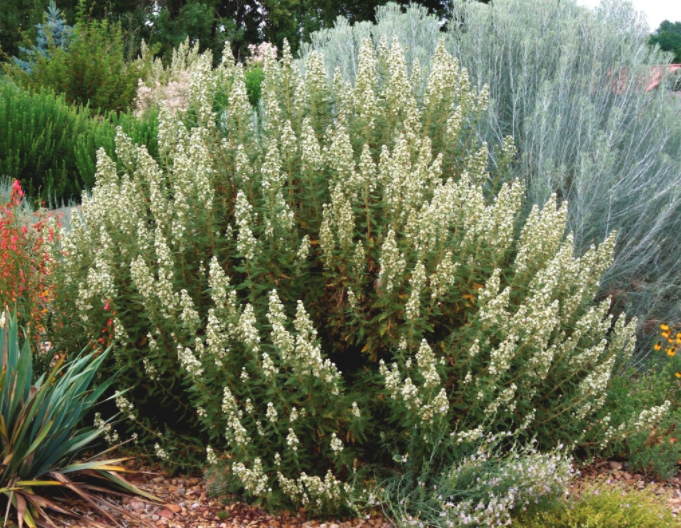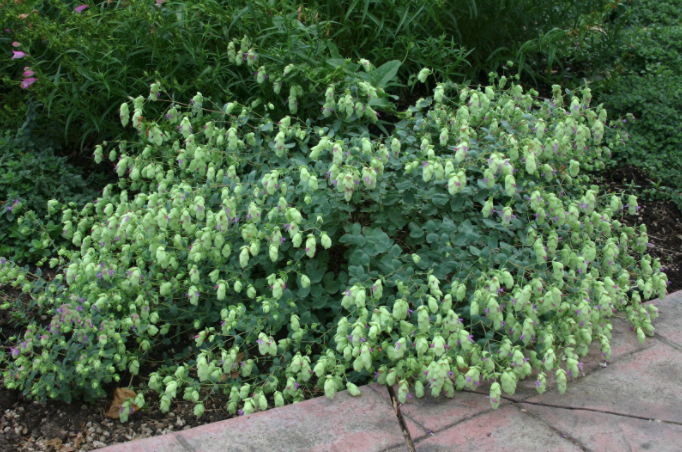Despite its dry heat and alkaline soil, Colorado flaunts colorful gardens with plants well-adapted to its natural conditions. Through years of observation, we have gained a repertoire of knowledge surrounding our local plant palette. That’s why we love what we do. We’ve spent years forming a relationship with the landscape and learning its intricacies as they reveal themselves. This month, we’re sharing a few of our favorite Colorado plants that thrive in the summer heat.
The Sun-Lovers
Heliopsis helianthoides - False Sunflower
This yellow beauty in the sunflower family shows radiant blooms from June to August. It grows 3-6 feet tall with a spread of 2-4 feet and attract butterflies to the garden.
Echinops ritro - Globe Thistle
Known for its bold, globular form, Echinops ritro adds distinct structure to the garden. Showing a blue color and intriguing texture, the flowerhead displays its form throughout the year. Rightly named, the greek roots of the word refer to a hedgehog appearance. You can expect Globe Thistle to reach about 4 feet tall and bloom from July to September.
Chamaebatiaria millefolium - Fernbush
Fernbush gives the appearance of being evergreen with its buds that remain visible through the winter months. This 3-5 foot tall native plant has aromatic white blooms that last from mid-June to August and its leaves are thought to have medicinal uses (Native Americans used the leaves in tea to settle an upset stomach).
Phlomis cashmeriana - Cashmere Sage
This late spring to early summer bloomer grows to be 36-60 inches tall, showing lavender-pink towers of color that turn to ornamental seedheads in the fall and winter. The Phlomis stalks add intriguing form to the garden.
Origanum libanoticum - Oregano Hopflower
A cascading perennial, Origanum looks best where it can flow over a planter wall. Quite literally, the blooms resemble hops and show a gradient of chartreuse to lavender. The long bloom (June to September) provides interest in the garden for most of the season. Origanum stays low at .75-1.5 feet and spreads 1-1.5 feet.
The Shade-Dwellers
Jamesia americana - Cliff Bush
Jamesia prefers dry shade, especially at the base of a cliff or boulder where its roots can be kept cool. Clusters of waxy white flowers, reddish bark, and brilliant autumn colors make it a lovely option for the year-round garden. Look for it in the wild and you're sure to find some growing near the cliffs.
Carex rosea - Rosy Sedge
This sedge plant creates mats of soft, fine texture in the shade of your garden, offering a vivid lawn alternative in the landscape. Carex adapts to wet and dry soil, as well as shade and sun, making it the perfect plant for tough spots.
Brunnera macrophylla - False Forget-me-not
With vibrant heart-shaped leaves, Brunnera spreads across the shade of your garden floor and shows delicate blue flowers that rise to 18” in the early spring and summer. For a magnificent textural effect, layer the bold leaves of Brunnera with more delicate foliage types in the garden.
Chasmanthium latifolium - Northern Sea Oats
Northern Sea Oats create a tall, vivid backdrop in the shade of the landscape and will tolerate a variety of growing conditions. The “oat-like” cascading seedheads bring unique texture and winter structure, making them an ideal choice for year-round interest.
Phalaris arundinacea 'Picta' - Ribbon Grass
The wide, variegated leaves of Ribbon Grass provide the garden with interesting foliage contrasts. It grows in wide clumps to 2-4 feet tall and tolerates a wide range of growing conditions. Attractive white seed heads bloom mid-summer.










